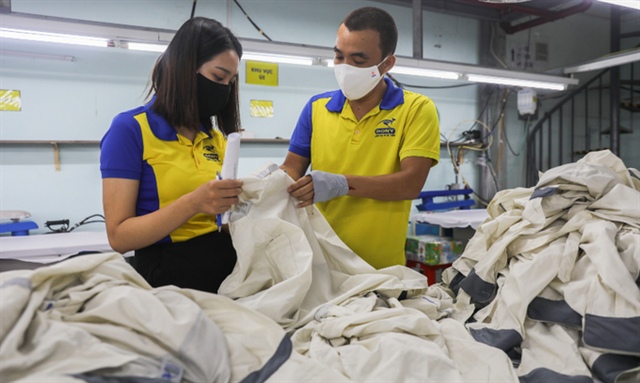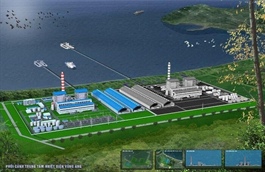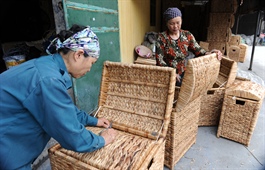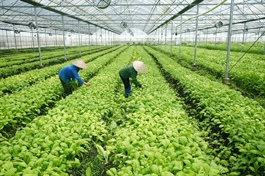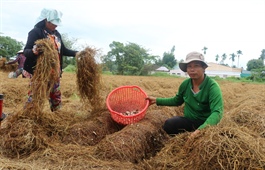Returning workers unable to meet southern companies’ massive labor needs
Returning workers unable to meet southern companies’ massive labor needs
The number of workers returning to southern industrial hubs is inadequate to meet companies’ requirements as they seek to return to full production capacity amid increasing orders.
Workers check garment products at a factory in Tan Binh District, Ho Chi Minh City, Oct. 21, 2021. Photo by VnExpress/Quynh Tran |
Garment maker VNS Vietnam Trade Production Jsc in Thu Duc City has got a lot of orders this month after HCMC lifted Covid restrictions, but with only 60 percent of its workforce available yet, it cannot fulfill all of them.
"After reopening our company has faced great difficulty, especially in terms of human resources," general director Ngo Thi Luong said.
The staff shortage means the company could not return to its pre-pandemic scale of production and has to negotiate with partners to delay delivery, she said.
"Never before have we prepared so many labor options. Normally there will be only options A and B, but now we have up to four backup plans for each situation".
Plastic products manufacturer MasterBatch Vietnam in Dong Nai Province is also unable to hire enough workers since many who returned to their hometowns have difficulty getting vaccinated.
"Our company will have to wait for workers to be vaccinated and isolated before returning to the factory," deputy general directorNguyen Thi Thanh Tra said.
The company is therefore unable to resume full production, she said without providing specific figures.
The two are among many southern companies that seek to resume normal production but are unable to hire workers.
Though places like HCMC and Dong Nai and Binh Duong provinces have seen thousands of workers return in recent weeks, the number still falls short of requirement.
Nguyen Xuan Son, HCMC operations manager for staffing and outsourcing at recruitment company ManpowerGroup Vietnam, said: "Workers are not returning for various reasons."
One of them is a fear of another Covid outbreak and attendant restrictions.
A survey by the HCMC Business Association in September found that only 40 percent of workers at manufacturing companies wanted to return to the city when it reopened.
This was because many lived in areas with low-quality housing and a high population density, which increased the risk of contracting Covid-19, Tran Viet Anh, deputy chairman of the HCMC Business Association, said.
"To ensure it has a large labor pool, Ho Chi Minh City needs to pay attention to building housing and health centers for workers."
Ngo Thi Thanh Huong, a spokesperson for Furukawa Automotive Parts Vietnam in Ho Chi Minh City, said: "Though the company has started recruiting for various positions, it has not been able to get the number of workers it expected, which affects its production plans".
In Dong Nai, though 28 companies have registered for 4,700 workers at the state-run employment agency, the hiring rate is low due to a shortage of applicants, Tran Thi Thuy Tram, its deputy head, said.
Another obstacle is that the province only allows people living in ‘green’ zones (areas with low risk of Covid-19) to work, further reducing the number of candidates, she added.
Some industry insiders expect the labor market to return to pre-pandemic levels only next year.
Members of the Handicraft and Wood Industry Association of Ho Chi Minh City have only achieved 60 percent production capacity so far, and it would take until February or March next year for full recovery, the association deputy chairman, Nguyen Chanh Phuong, said at a recent forum.
Tra of MasterBatch Vietnam said companies should be allowed to increase overtime so that more orders could be fulfilled while workers could earn more.
The government should facilitate foreign experts’ entry into the country and ease restrictions, she added.


